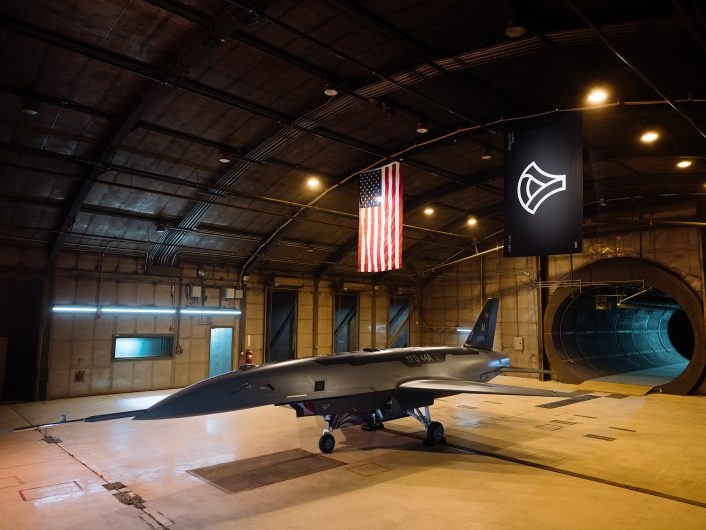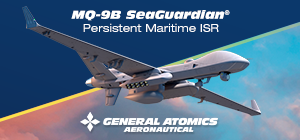
The USAF announced that ground testing of the Collaborative Combat Aircraft prototypes, the General Atomics’ YFQ-42A and Anduril’s YFQ-44A, is starting at the Beale Air Force Base in California.
As of May 1, testing has started on the sole Anduril YFQ-44A, with the General Atomics aircraft to follow. It is worth noting, however, that while the YFQ-44 is only now breaking cover, the GA-ASI aircraft has been flying, although possibly in slightly different configurations, for many months having earlier been selected, as XQ-67A, as the USAF Off-Board Sensing Station (OBSS).
Beale AFB has been chosen as the preferred location to host the very first “CCA Aircraft Readiness Unit” (ARU). While at present the focus is obviously on testing the candidate aircraft, the mission intended for the ARU is to provide CCAs ready to deploy worldwide at a moment’s notice.
Being semi-autonomous platforms, the operational CCAs will not require the flying of any significant number of daily sorties to maintain readiness. In the future, CCA ARUs will maintain aircraft in a fly-ready status and flown minimally so the number of airmen required to support the fleet will be substantially lower than other weapons systems, contributing to its intended low cost.
The Anduril YFQ-44A had so far only been “seen” in concept images or mock-ups. This is the first time we have gotten a look at the real aircraft, but no substantial surprises in design have emerged. One noticeable difference is a small “bump” on the nose of the aircraft which probably contains a forward-facing camera and/or IRST seeker.
As is known, the YFQ-44A has been developed on the basis of the FURY, an aircraft originally designed by Blue Force Technologies, which envisioned it as an Aggressor to meet the Air Force's needs for air combat training. Anduril acquired the company in 2023 and made modifications to broaden the scope of application for the new machine. Anduril also provides the LATTICE artificial intelligence core, a solution that allows a single human operator to control multiple platforms simultaneously.
The FURY / YFQ-44A is an uncrewed aerial vehicle characterised by high modularity, a single-engine configuration, and a design focused on low observability. The main "aesthetic" differences that immediately set it apart from GA-ASI’s own aircraft are due to the tail (dual vertical stabilisers for GA-ASI, single for Anduril) and the position of the air intake, which on the FURY is ventral.
Details are still scarce, but Anduril said it would pick “a commercially available engine with low consumption rates to ensure a long mission range”. The FURY as originally conceived was going to employ a Williams FJ44-4M turbofan engine but it’s not clear if this endures in the YFQ-44A.
The aircraft promises high-subsonic speeds (0.95 mach) and 9 G manoeuvrability.
The testing at Beale will seek to validate propulsion systems, avionics, autonomy integration, and ground control interfaces. These assessments will inform the next decisions and testing phases and eventually lead to the first flights expected in the summer.
The USAF expects to decide in 2026 whether to build one or both of the companies’ offerings for its Increment 1 CCA needs.
Again in 2026, the USAF plans to start the development / selection process for the next set of CCAs, the Increment 2. While the intent is to drive cost and complexity down, it is also intended that CCAs should see their usefulness expand by taking on more missions, more sensors, more weapons.
The focus for Increment 1 is on air-to-air capability with the aircraft tasked with carrying an unspecified number of air-to-air missiles in support of crewed fighters. The armaments are almost certainly going to be carried internally; external carry might be an option in the right circumstances.
The USAF aims to field 1,000 CCAs, which might also become more numerous still. Fielding CCAs is one of the priorities listed by the Trump administration for the Armed Forces, which might lead to more and faster investment over this capability.








.png)
